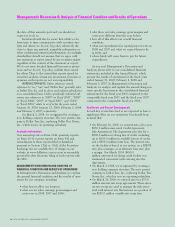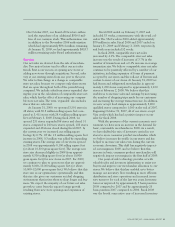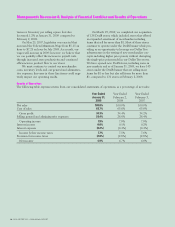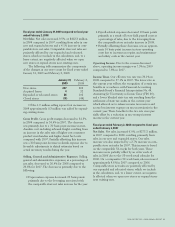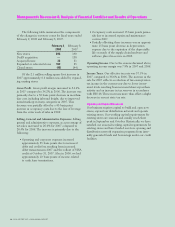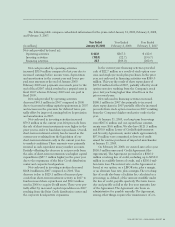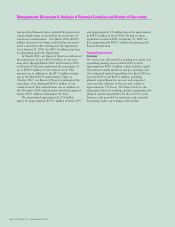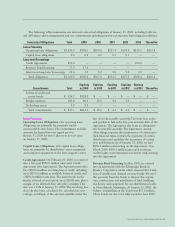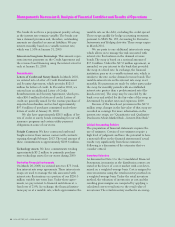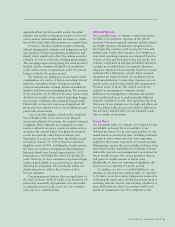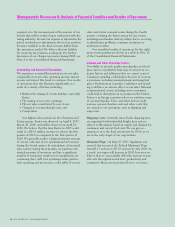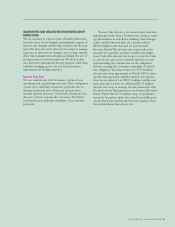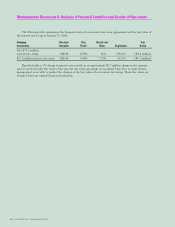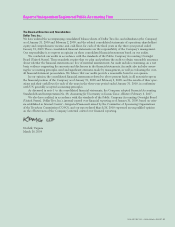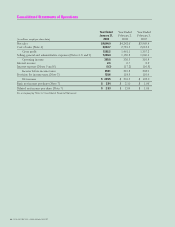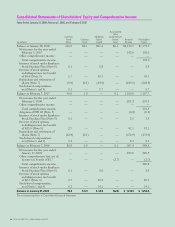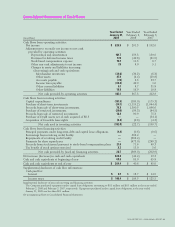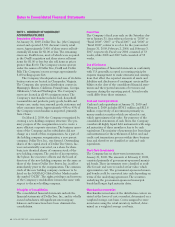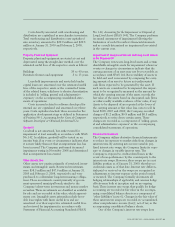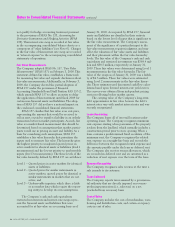Dollar Tree 2008 Annual Report Download - page 26
Download and view the complete annual report
Please find page 26 of the 2008 Dollar Tree annual report below. You can navigate through the pages in the report by either clicking on the pages listed below, or by using the keyword search tool below to find specific information within the annual report.
24
DOLLAR TREE, INC. • 2008 ANNUAL REPORT
Management’s Discussion & Analysis of Financial Condition and Results of Operations
required as to the measurement of the amount of tax
benefit that will be realized upon settlement with the
taxing authority. Income tax expense is adjusted in the
period in which new information about a tax position
becomes available or the final outcome differs from
the amounts recorded. We believe that our liability
for uncertain tax positions is adequate. For further
discussion of our changes in reserves during 2008, see
Note 3 to the Consolidated Financial Statements.
Seasonality and Quarterly Fluctuations
We experience seasonal fluctuations in our net sales,
comparable store net sales, operating income and net
income and expect this trend to continue. Our results
of operations may also fluctuate significantly as a
result of a variety of factors, including:
• Shifts in the timing of certain holidays, especially
Easter;
• The timing of new store openings;
• The net sales contributed by new stores;
• Changes in our merchandise mix; and
• Competition.
Our highest sales periods are the Christmas and
Easter seasons. Easter was observed on April 8, 2007,
March 23, 2008, and will be observed on April 12,
2009. We believe that the later Easter in 2009 could
result in a $25.0 million increase in sales in the first
quarter of 2009 as compared to the first quarter of
2008. We generally realize a disproportionate amount
of our net sales and of our operating and net income
during the fourth quarter. In anticipation of increased
sales activity during these months, we purchase sub-
stantial amounts of inventory and hire a significant
number of temporary employees to supplement our
continuing store staff. Our operating results, particu-
larly operating and net income, could suffer if our net
sales were below seasonal norms during the fourth
quarter or during the Easter season for any reason,
including merchandise delivery delays due to receiving
or distribution problems, consumer sentiment or
inclement weather.
Our unaudited results of operations for the eight
most recent quarters are shown in a table in Note 12
of the Consolidated Financial Statements.
Inflation and Other Economic Factors
Our ability to provide quality merchandise at a fixed
price and on a profitable basis may be subject to eco-
nomic factors and influences that we cannot control.
Consumer spending could decline because of econom-
ic pressures, including unemployment and rising fuel
prices. Reductions in consumer confidence and spend-
ing could have an adverse effect on our sales. National
or international events, including war or terrorism,
could lead to disruptions in economies in the United
States or in foreign countries where we purchase some
of our merchandise. These and other factors could
increase our merchandise costs and other costs that
are critical to our operations, such as shipping and
wage rates.
Shipping Costs. Currently, trans-Pacific shipping rates
are negotiated with individual freight lines and are
subject to fluctuation based on supply and demand for
containers and current fuel costs. We can give no
assurances as to the final actual rates for 2009, as we
are in the early stages of our negotiations.
Minimum Wage. On May 25, 2007, legislation was
enacted that increased the Federal Minimum Wage
from $5.15 an hour to $7.25 an hour by July 2009. As
a result, our wages will increase in 2009; however, we
believe that we can partially offset the increase in pay-
roll costs through increased store productivity and
continued efficiencies in product flow to our stores.


